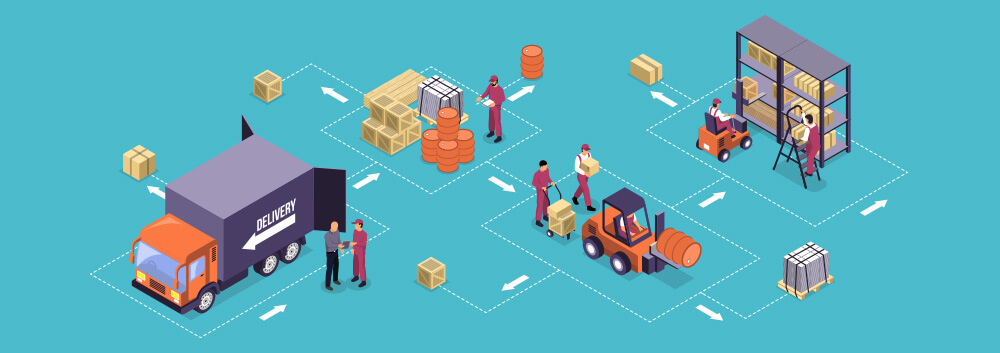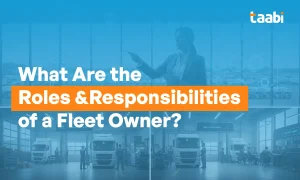Predictive analytics is a game-changing AI solution that empowers logistics companies to foresee future trends and events. By analyzing historical data and applying machine learning algorithms, organizations can anticipate demand fluctuations, potential delays, and supply chain disruptions. Armed with this foresight, businesses can proactively adjust their strategies, reducing risks and improving overall supply chain resilience. Predictive analytics thus plays a pivotal role in maintaining optimal inventory levels, meeting customer demands promptly, and staying competitive in a rapidly changing market.
Real-time asset monitoring utilizes AI-powered sensors and IoT devices to track and manage assets throughout the supply chain. This includes monitoring the location, condition, and status of goods, vehicles, and equipment in real-time. With this visibility, logistics companies can optimize routes, prevent theft or loss, and respond promptly to potential disruptions. Real-time asset monitoring ensures a seamless and efficient supply chain by enabling businesses to make agile decisions based on up-to-date information.
AI-powered asset health diagnosis goes beyond predictive maintenance, providing detailed insights into the condition and performance of assets. By continuously monitoring asset data, including temperature, vibration, and other key indicators, logistics companies can detect early signs of wear, damage, or potential failures. This level of asset intelligence allows for timely interventions and strategic asset replacement, leading to optimized performance, cost savings, and enhanced safety across the supply chain.
Real-time telematics, powered by AI, revolutionizes fleet management in logistics. By collecting data from GPS, vehicle sensors, and traffic information, AI systems can offer real-time insights into vehicle location, condition, and performance. This allows logistics companies to optimize routes, minimize delivery delays, and enhance overall fleet efficiency. Real-time telematics also helps monitor driver behavior, enabling companies to improve safety, reduce fuel consumption, and manage vehicle maintenance proactively.
Digital asset-locking systems employ AI-based security protocols to safeguard valuable assets during transportation and storage. Through biometric authentication, IoT integration, and machine learning algorithms, these systems provide robust protection against theft and unauthorized access. Logistics companies can remotely track asset movement and detect any suspicious activities in real-time. With enhanced asset security, businesses can build trust with clients, insurance providers, and partners, fostering a secure and reliable supply chain ecosystem.
AI-powered asset fuel and power consumption optimization play a crucial role in sustainable logistics practices. By analyzing data from vehicles and equipment, AI algorithms can identify patterns and inefficiencies in fuel or power usage. Through route optimization, load management, and engine performance monitoring, logistics companies can reduce fuel consumption and greenhouse gas emissions. This not only leads to cost savings but also demonstrates a commitment to environmental responsibility, enhancing the company’s reputation and attracting eco-conscious customers.
AI-driven simulation-based employee training offers a safe and immersive learning environment for logistics personnel. Through virtual scenarios and machine learning, AI can replicate real-world challenges and evaluate employee responses. This training approach helps enhance problem-solving skills, decision-making, and crisis-management abilities. By reducing the need for physical equipment and minimizing risks, logistics companies can efficiently train their workforce, ensuring a competent and well-prepared team capable of handling diverse situations in the dynamic logistics landscape.
In the fast-paced world of logistics, last-mile delivery management has become a focal point for businesses aiming to excel in customer satisfaction. AI-driven solutions play a pivotal role in this domain, optimizing delivery processes from distribution centers to customers’ doorsteps. By employing real-time tracking, data analysis, and machine learning, logistics companies can fine-tune delivery routes, reduce delivery times, and enhance the accuracy of shipments. The result is a seamless last-mile experience that ensures timely deliveries and delighted customers, giving companies a competitive edge in the market.
AI-powered delivery schedule and route optimization are revolutionizing the logistics landscape, providing businesses with unprecedented efficiency and cost savings. Through sophisticated algorithms, AI analyzes various data points, such as order volumes, vehicle capacity, and traffic conditions, to create optimal delivery schedules. By minimizing travel distances and maximizing vehicle utilization, logistics companies can reduce fuel costs and minimize their carbon footprint. Additionally, real-time updates and dynamic route adjustments enable companies to adapt to unexpected changes, ensuring timely and hassle-free deliveries that enhance customer satisfaction and loyalty.
AI has transformed customer satisfaction management in logistics by analyzing customer feedback, queries, and behavior patterns. Natural Language Processing (NLP) algorithms can extract valuable insights from customer interactions, helping companies understand preferences and pain points. This knowledge enables logistics firms to tailor their services, improve last-mile delivery experiences, and address customer concerns promptly. By providing personalized and efficient service, logistics companies can foster customer loyalty and gain a competitive edge in the market.
AI-driven standard compliance management ensures logistics companies adhere to industry regulations and standards. Leveraging advanced algorithms, AI can monitor and track compliance requirements, such as safety protocols, documentation, and environmental regulations. By automating compliance checks, logistics firms can reduce human errors, avoid penalties, and maintain a reputation for reliability and responsibility. AI’s ability to identify potential compliance gaps in real-time enables swift corrective action, fostering a culture of compliance throughout the supply chain.
AI’s process cost and budget management capabilities empower logistics companies to optimize financial resources effectively. By analyzing historical cost data and tracking expenses, AI algorithms can identify areas of inefficiency and recommend cost-saving measures. Moreover, AI-driven predictive analytics aids in accurate budget forecasting, enabling better financial planning and risk mitigation. With streamlined cost management processes, logistics firms can allocate resources efficiently and achieve higher profitability in a competitive market.
In the development of logistics management software, creating a well-structured and scalable architecture is paramount. The software architecture serves as the blueprint for the entire system, defining its components, interactions, and data flow. It typically follows a modular approach, with distinct modules dedicated to order management, inventory control, warehouse operations, transportation management, and other essential functions. The architecture must ensure seamless integration between these modules to facilitate smooth information exchange and efficient workflow. Moreover, it should be designed to accommodate future expansions and updates, allowing the software to adapt to evolving business needs and technological advancements.
Selecting the right technology stack is a critical aspect of logistics management software development. Development teams often utilize programming languages like Java, Python, or C# to build the software’s core functionalities. For databases, relational databases like MySQL or PostgreSQL are commonly employed to store and manage vast amounts of logistics data. Additionally, cloud-based solutions are becoming increasingly popular due to their scalability and cost-effectiveness. Application Programming Interfaces (APIs) play a crucial role in connecting the logistics software with external systems, such as GPS for real-time tracking and Electronic Data Interchange (EDI) for seamless communication with suppliers and customers.
The development process of logistics management software follows a systematic and iterative approach. It typically starts with thorough requirement gathering, where developers work closely with stakeholders to understand their specific needs and pain points. The next step involves creating a detailed design and architecture based on these requirements. Development teams then proceed to implement the software, building each module and integrating them into a cohesive system. Rigorous testing is conducted at various stages to identify and rectify any bugs or issues. Once the software passes quality assurance tests, it undergoes a deployment phase, where it is launched for user acceptance testing and feedback. Feedback is carefully considered, and necessary adjustments are made before the final deployment of the logistics management software.
The software design phase focuses on the user experience (UX) and user interface (UI) aspects of the logistics management system. A user-friendly interface is crucial to ensure that users can easily navigate the software and perform tasks efficiently. The design should be intuitive, with clear labels, icons, and navigation paths. Additionally, the software design must be responsive, allowing users to access and operate the system seamlessly across various devices, such as desktop computers, tablets, and smartphones. Collaborating with logistics experts and end-users during the design process helps gather valuable insights and ensures that the software caters to their specific needs, leading to a successful and user-centric logistics management software.
In today’s dynamic logistics landscape, digital logistics management solutions have emerged as powerful tools that not only enhance operational efficiency but also drive profitability and overcome traditional logistics management challenges. Let’s delve into six real-life scenarios showcasing how our logistics management software yields tangible benefits for logistics businesses:
Digital logistics solutions allow businesses to monitor the health of transportation assets, such as vehicles and equipment. Proactive maintenance based on real-time data reduces downtime, enhances asset utilization, and ensures efficient fleet management, contributing to overall cost reduction.
Geofencing technology integrated into logistics management software provides real-time asset and shipment tracking. Businesses can monitor shipments’ precise locations, streamline in-transit visibility, and promptly respond to any deviations or delays, there by enhancing customer satisfaction and operational reliability.
Logistics management software employs dynamic route optimization algorithms that consider real-time traffic, weather, and other variables. Accurate delivery ETAs not only improve customer satisfaction but also lead to cost-effective resource allocation and efficient time management, boosting profitability.
With logistics management software, businesses can plan efficient delivery schedules based on demand forecasts and real-time insights. This optimizes driver utilization and reduces idle time, enhancing delivery efficiency, reducing operational costs, and maximizing revenue potential.








